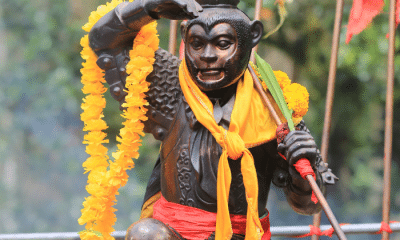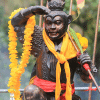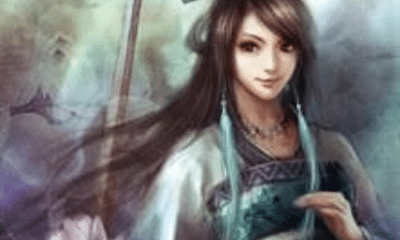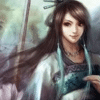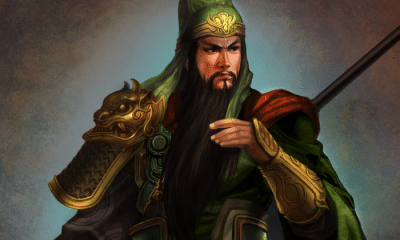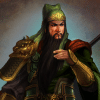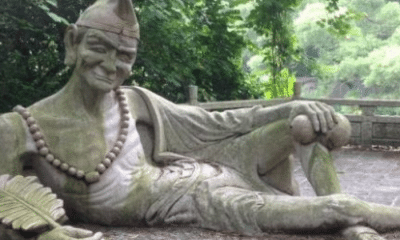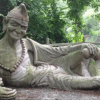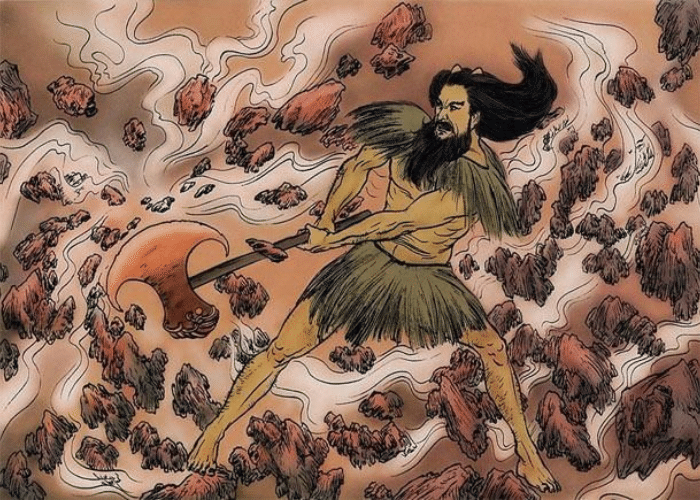
Chinese
Pangu: The Giant Who Created the Earth
Pangu: The Giant Who Created the Earth
The legend of Pangu is the myth of how the heavens and earth were created according to the ancient Chinese.
Virtually every culture has an ancient legend of how the world was created. This idea is one of the most basic purposes of religion – to explain how the world came to be.
In much of China, the creation of the world is attributed to a being called Pangu, also Anglicized as P’an-ku.
Pangu was the first being to come to life, before either the heavens or earth had been created. While the details of the legend vary, most include him emerging from a great egg and using both it and his own body to create the world.
Pangu’s story, however, is not unique to China. Similar stories can be found throughout the Near East and Europe, cultures entirely distinct from those of China.
So how did so many cultures create the story of a giant that made the world?
Pangu and the Egg
The story of Pangu is one of many creation myths in Chinese folklore. There are many versions of these myths that exist within Daoism’s local and regional variations.
The story of Pangu tells how the land and sky were created, as opposed to the legends of the Jade Emperor or the mother goddess Nuwa that are concerned with the creation of people.
Pangu’s myth, like many creation myths, began with the void of chaos.
Over the course of 18,000 years the swirling chaos formed an enormous egg.
Chaos still existed in this egg, however. The opposing forces of yin and yang constantly fought against one another.
Eventually, however, yin and yang came into balance. When they did, they created Pangu.
In most depictions, Pangu had an unattractive human face with rounded horns on the forehead. His arms and legs were covered in hair and he wore primitive clothing.
Pangu was sometimes shown with disproportionate features suggesting dwarfism, but he soon grew to be a giant.
When Pangu came into existence, he realized that he was confined in a very tight space. He began to twist and writhe, eventually breaking the shell of the egg and emerging into the void.
From there, there are at least three different versions of the story.
In the first, the cracked egg created the heavenly bodies and, in some versions of the story, the earth.
The light egg whites floated up to become the clouds and stars while the dense yolk sunk down and became land. The two halves of the shell became the sun and moon.
In other versions, however, yin and yang themselves were used to create the land and sky while the egg made only the stars and planets. Pangu split yin and yang with his axe so they became two opposite elements in perfect balance.
In both of these stories, the heavens and the earth were constantly attracted to one another. Pangu placed himself between them and pushed the sky away from the land.
He held the sky in this way for 18,000 years. Every day both he and the universe grew – the earth grew ten feet thicker while Pangu grew three feet taller so he could push the sky farther away.
After eighteen millennia Pangu stopped growing. When this happened he died and his limbs became the four pillars that hold up the sky.
In the third version of the story, Pangu had a much shorter lifespan.
The effort of breaking free of the egg exhausted him, so Pangu fell asleep. He died in his sleep and his body changed over time.
The last of his breath became clouds. His body became the land with his spine forming a great mountain range.
His teeth and bones became metal and gems. His veins made great canyons and ravines, the blood that flowed in them becoming rivers.
His sweat became rain. His voice was preserved as thunder.
Even the fleas that lived in his thick hair were transformed. They became the animals that inhabited the land before humans were created.
His hair became forests in some retellings of the story. In others, it drifted upward and became the stars.
His eyes floated away from his body. The left eye became the sun while his right eye became the moon.
In this version, his limbs also became four pillars that held the heavens up.
My Modern Interpretation
Pangu’s story has many variations because it is one of the oldest in Chinese mythology.
The story was first written in the 3rd century AD, but scholars believe it is much older than that. Some believe it developed during or before the Zhou Dynasty, which began in 1046 BC.
A story written in the late Zhou Dynasty uses a different name, but refers to an early man that separated the heavens and the earth. Many interpretations believe this is a variation on the Pangu myth.
Because of both its subject and primitive nature, it is widely believed that the legend of Pangu may be one of the oldest in China. While the concepts of yin and yang were added later, the basic story of a giant creating the features of the world and holding the heavens aloft may date back to early Bronze Age or even Neolithic history.
This idea was supported by the links historians easily saw when they compared the mythology of China to that of other ancient cultures.
The various stories of Pangu are strikingly similar to some well-known myths from Europe.
The first is that of Ymir, the primitive giant of Norse mythology whose body created the land. Ymir took form in a void as the first being in creation and his body was used very similarly to that of Pangu.
While Ymir is the most well-known version of this story today, older examples of a similar myth are found in the Near East. In Mesopotamia, the earth was created from the body of the dragon-like mother goddess Tiamat.
There are also similarities in the idea of four pillars that hold up the sky. In Greek mythology this task was associated with the Titans, originally four who were then replaced by Atlas. In Norse there were four dwarves.
These stories, too, are usually considered to be incredibly ancient rather than indigenous to their cultures.
Chinese culture and mythology are usually considered to have developed separately from Indo-European and Semitic cultures. That does not mean, however, that they were entirely separated.
Indo-European languages and religion originated in either Eastern Europe or Anatolia and spread not only to Europe, but also through the Indian subcontinent and into parts of Northern Asia as far east as Siberia.
The story of a giant’s body creating the earth could have arisen in both China and Europe by coincidence, but it is also possible that some degree of cross-cultural exchange spread the story.
Given the spread and age of the known legends, however, some historians believe that this archetype may entirely predate the Indo-European and early Chinese cultures entirely.
Because of the lack of written records, it is impossible to know exactly when and how ancient cultures diverged. The earliest Indo-European languages, which have been most studied by scholars in the West, emerged anywhere from 8000 to 4000 BC.
Both during and before the era, human populations were migrating throughout the world. While Paleolithic people lived in East Asia at least 45,000 years ago, migration throughout Eurasia continued.
One of the last eras of major migration was as recently as 9,000 years ago, after the end of the last Ice Age. This means that people were still migrating throughout Asia, the Near East, and Europe before the language and cultural groups we now recognize had been created.
The archetypes of the Pangu myth could, therefore, be far more ancient than any of the individual cultural families we now recognize. It could predate the idea of Indo-European or Sino-Tibetan people entirely and date back to a culture that predated migration into either China or Europe.
In Summary
In Chinese folklore, the world is often said to have been created by a giant named Pangu.
He was created, often in the balancing of yin and yang, inside of an egg that emerged in the chaotic void of the universe. When he broke out of the egg and came to life, the world was made.
There are many traditions that give their own explaination for how this happened. In some, he split yin and yang to make the earth and sky himself, while in others the parts of the egg made the world.
Pangu is often said to have held the sky up away from the land as both grew to their full size. When he died, his limbs became pillars that continued this task.
Possibly the most ancient story, however, claimed that Pangu’s body created all the features of the world and the sky. Again, the heavens and the earth were kept apart by his limbs.
There are many parallels to these stories in the Near East and Europe. While Indo-European and East Asian cultures are largely considered separate, the pillars of the sky and a giant’s body creating the features of the land are widespread archetypes that seem to cross between these cultural divisions.
While this could be coincidental, it is more likely that the stories are actually related. Exchange between seemingly unrelated cultures, either in border regions or from shared prehistoric origins, resulted in strikingly similar myths being told in otherwise unrelated cultures.


